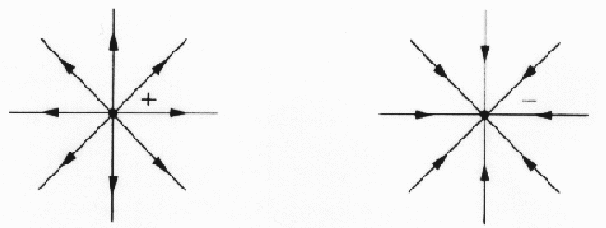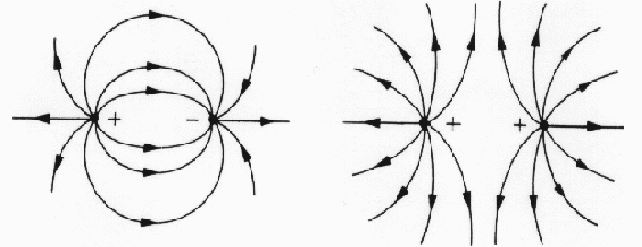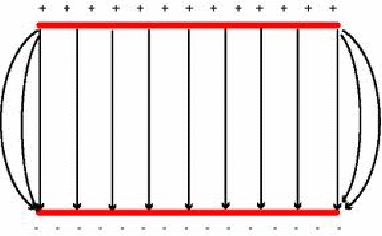Electric fields can be intuitively represented using electric field lines – originated by Michael Faraday who was not a mathematician and wanted a non mathematical way to visualise electric fields.
At any point in an electric field
-
the direction of the field is at any point is indicated by arrows drawn on the field lines. If a field line does not pass through the required point, the direction of the field is deduced from the direction of nearby field lines.
-
The field lines indicate the direction and magnitude of the force on a positive charge.
-
The magnitude of the electric field is proportional to the closeness of the field lines at that point. The closeness of the field lines, the greater the field.

The fields due to positive and negative point charges are shown above. The field lines get closer together as they get closer to the charge, so the electric field gets stronger. The field on the left is directed away from the charge. A positive charge will feel a force away from this positive point charge. The field on the right is directed towards from the charge. A positive charge will feel a force towards from this negative point charge.
The diagrams below illustrate the resultant electric fields due to two charges close together. On the left the field lines are directed from the positive to the negative charge, indicating the positive charge is attracted to the negative charge (and vice versa) and on the left the field lines 'avoid' each other, indicating repulsion.

A uniform field is illustrated by regularly space lines. A very nearly uniform field may be produced by parallel, charged electric plates. The field is uniform except at the ends.

